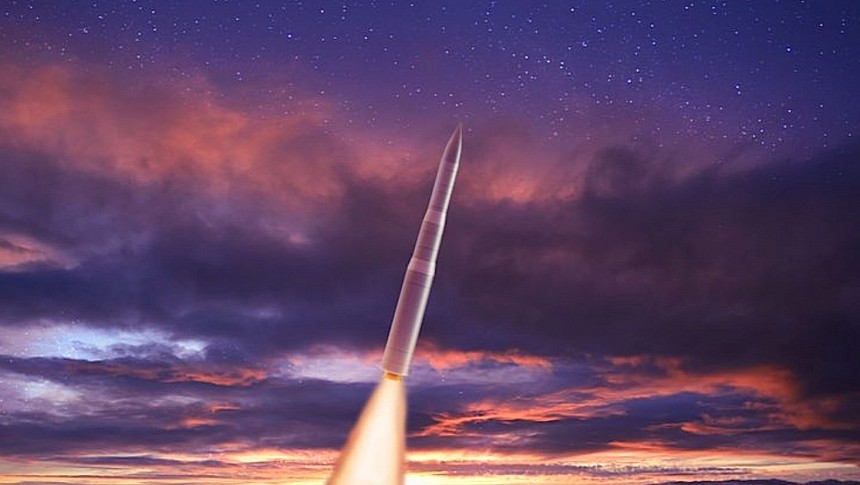Whenever the term ICBM comes up I feel chills running down my spine. That's because it is meant to designate some of the world's deadliest, most far-reaching, and most of the time nuclear-capable weapons ever devised by humanity.
ICBM stands for intercontinental ballistic missile and is used to name long-range transport systems meant to defeat far-away adversaries. Tracing its roots back to the German V-2 rocket program, the ICBM family of missiles is supposed to strike targets located at least 3,400 miles (5,500 km) away from the launch point, most of the time using nuclear warheads.
Lucky for us, to date no actual ICBM was fired in a real-life war. But plenty of them have been launched for testing purposes, painting a picture of a future all of us hope will never come to pass. But even if we hope for that we can't stop from getting ready for such an eventuality.
The backbone of America's ICBM arsenal is presently comprised of Minuteman III missiles. Those are ground-based weapons systems devised in the 1960s at a time when the (first) Cold War was at its height.
Minuteman can launch from silos and hit targets located as far as 6,000 miles (9,600 km) away, and it still is a very capable system. But it's growing old, and in the fast-evolving world we live in something even better and more capable is required.
The American military started looking for that something in late 2020, when the Ground Based Strategic Deterrent (GBSD) program was devised. It's an effort conducted by a consortium led by Northrop Grumman that in a few years' time should result in the arrival of a new ICBM.
The new one is called LGM-35A Sentinel, and it is supposed to be a modular device that will allow the incorporation of new technologies as soon as they develop. The military also wants them because, in theory, they should be easier and cheaper to maintain and operate.
The exact specifications are not known, but we do know Northrop Grumman is handling the development of the ICBM's stage one and two components (the missile has three stages), and it's pretty far along in the process.
We got word this week of the company conducting a live fire test of Sentinel's stage two solid rocket motor. The procedure was conducted at the U.S. Air Force Arnold Engineering Development Complex in Tennessee and it was deemed a success.
The rocket did not fly, as this was a static test. It was conducted inside a vacuum chamber designed in such a way as to simulate the real conditions the ICBM will encounter during its flight to the edge of space and back down to Earth.
The defense contractor and its military partners will now use the data generated from the test to get an idea of whether the real thing and its capabilities match modeling predictions. If all checks out, the ICBM will move into a more advanced stage of testing, one that will qualify the tech for both stages.
Northrop Grumman and the military overlords of the Sentinel ICBM hope to have it operational by the end of this decade. This family of missiles should stay in service until the late 2070s.
Lucky for us, to date no actual ICBM was fired in a real-life war. But plenty of them have been launched for testing purposes, painting a picture of a future all of us hope will never come to pass. But even if we hope for that we can't stop from getting ready for such an eventuality.
The backbone of America's ICBM arsenal is presently comprised of Minuteman III missiles. Those are ground-based weapons systems devised in the 1960s at a time when the (first) Cold War was at its height.
Minuteman can launch from silos and hit targets located as far as 6,000 miles (9,600 km) away, and it still is a very capable system. But it's growing old, and in the fast-evolving world we live in something even better and more capable is required.
The American military started looking for that something in late 2020, when the Ground Based Strategic Deterrent (GBSD) program was devised. It's an effort conducted by a consortium led by Northrop Grumman that in a few years' time should result in the arrival of a new ICBM.
The new one is called LGM-35A Sentinel, and it is supposed to be a modular device that will allow the incorporation of new technologies as soon as they develop. The military also wants them because, in theory, they should be easier and cheaper to maintain and operate.
The exact specifications are not known, but we do know Northrop Grumman is handling the development of the ICBM's stage one and two components (the missile has three stages), and it's pretty far along in the process.
We got word this week of the company conducting a live fire test of Sentinel's stage two solid rocket motor. The procedure was conducted at the U.S. Air Force Arnold Engineering Development Complex in Tennessee and it was deemed a success.
The rocket did not fly, as this was a static test. It was conducted inside a vacuum chamber designed in such a way as to simulate the real conditions the ICBM will encounter during its flight to the edge of space and back down to Earth.
The defense contractor and its military partners will now use the data generated from the test to get an idea of whether the real thing and its capabilities match modeling predictions. If all checks out, the ICBM will move into a more advanced stage of testing, one that will qualify the tech for both stages.
Northrop Grumman and the military overlords of the Sentinel ICBM hope to have it operational by the end of this decade. This family of missiles should stay in service until the late 2070s.






